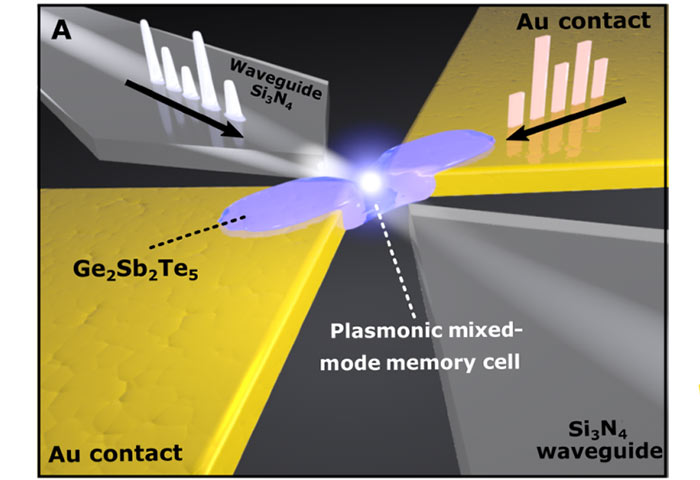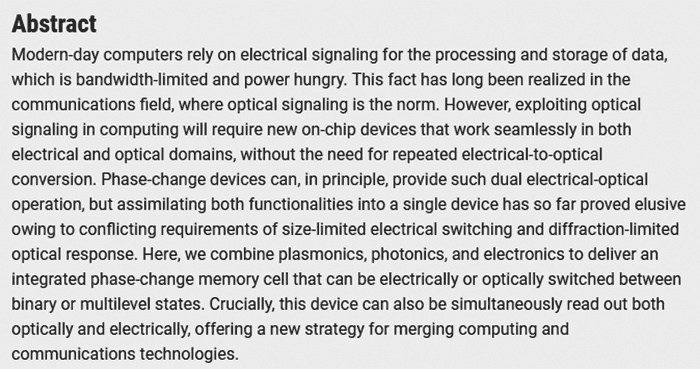Scientists from Oxford University, in collaboration with researchers at the universities of Münster and Exeter, have created and demonstrated the "first ever integrated nanoscale device which can be programmed with either photons or electrons". This integrated non-volatile device can bridge the fields of optical and electronic computing and is said to be an elegant way to achieve faster and more energy efficient memory and processor operations.

Light-based, laser or photonic computing has been previously touted as potentially delivering a leap in speed and efficiency to computer architectures and this new nanoscale device development demonstrably helps computing components jump the optical-electronic barrier. The scientists combined concepts from integrated photonics, plasmonics and electronic memory technologies "to deliver a compact device that can operate simultaneously as an optical or electrical memory, and as a processor," says the University of Exeter research blog.

The new nanoscale device can store and process information using light or electricity or any combination of these two. Energy and processing efficiency is perhaps the most significant attraction of photonic computing. Plasmonic nanogap enhanced phase change devices with dual electrical-optical functionality paper co-author Nathan Youngblood suggests that the new device will be particularly welcome in AI processing. "It is believed that interfacing light-based photonic computing with its electrical counterpart is the key to the next chapter in CMOS technologies," asserted Youngblood.
The full paper was published in Science Advances, 29th November 2019, linked in the paragraph above. This research was carried out as part of the EU H2020 project Fun-COMP.













